South Carolina Crime Rate and Statistics: Analyzing the Latest FBI Data
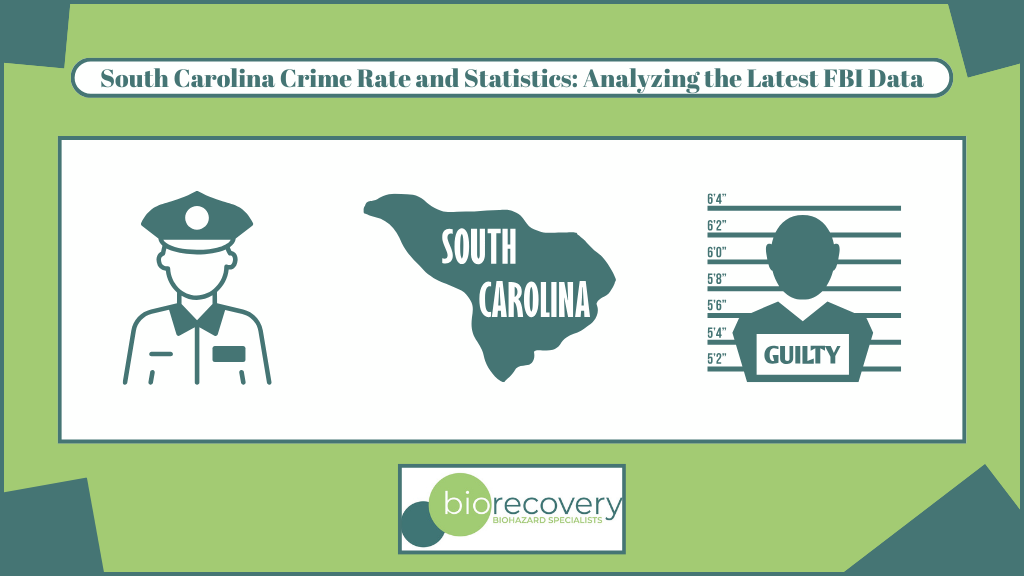
Understanding the landscape of crime in any region is crucial for both residents and policymakers. This article delves into the latest South Carolina crime rate and statistics, drawing insights from data collected by the Federal Bureau of Investigation (FBI). In this article Bio Recovery South Carolina will examine trends in both violent crimes, such as murder, rape, and aggravated assault, and property crimes, including burglary, larceny-theft, and motor vehicle theft.
By analyzing these figures, we aim to provide a comprehensive overview of the current state of crime in the Palmetto State, comparing it to national averages and exploring potential contributing factors. Whether you’re a resident, policymaker, or simply interested in public safety, this comprehensive overview provides the context needed to understand crime in South Carolina.
Overview of Crime Statistics in South Carolina
South Carolina’s crime landscape has seen notable shifts in recent years, with both encouraging declines and persistent challenges. According to the latest FBI data and the South Carolina Law Enforcement Division (SLED), the state’s overall crime rate reflects a complex mix of progress in certain areas and concerns in others.
In 2023, South Carolina reported a 5.9% decrease in its murder rate, marking an important decline in one of the most serious violent crimes. Additionally, the total number of murders fell by 4.3% compared to 2022, indicating progress in addressing violent crime. However, other violent offenses, including aggravated assault and robbery, remain significant contributors to the state’s crime rate.
Property crimes continue to be a concern across South Carolina. While burglaries have declined slightly, crimes like motor vehicle theft and larceny-theft remain prevalent, contributing to the state’s overall property crime rate. These trends highlight the need for targeted law enforcement strategies and community initiatives to reduce opportunities for such offenses.
When compared to national averages, South Carolina’s violent and property crime rates often rank higher than those of other states, driven by both urban and rural crime hotspots. However, it’s essential to note that crime rates can vary widely between cities and counties. Metropolitan areas like Columbia, Charleston, and Greenville typically report higher crime rates than smaller, rural communities.
As we delve deeper into specific crime categories in this article, it becomes clear that while South Carolina has made strides in reducing certain crimes, challenges remain that require ongoing attention and resources.
South Carolina Crime Rate Comparison with National Average
To understand South Carolina crime statistics in context, it’s helpful to compare them with national crime trends. According to the FBI’s most recent crime data, the United States as a whole has experienced a 3% decrease in violent crime in 2023 compared to the previous year. Similarly, property crime rates have shown a modest decline with burglary and larceny-theft decreasing by 7.6% and 4.4% respectively. These trends suggest a gradual improvement in public safety across the country.
In South Carolina, however, the picture is more nuanced. While the state has seen notable reductions in its murder rate—as we mentioned earlier—other violent crimes, such as aggravated assaults and robberies, still occur at higher rates than the national average. For example, South Carolina consistently ranks among the top states for violent crime, with a rate of 49.10 violent crimes per 10,000 residents, compared to the national rate of 36.38 per 10,000 residents. The graph below shows the rate for aggravated assault through the year of 2023 in South Carolina compared to the national rate:
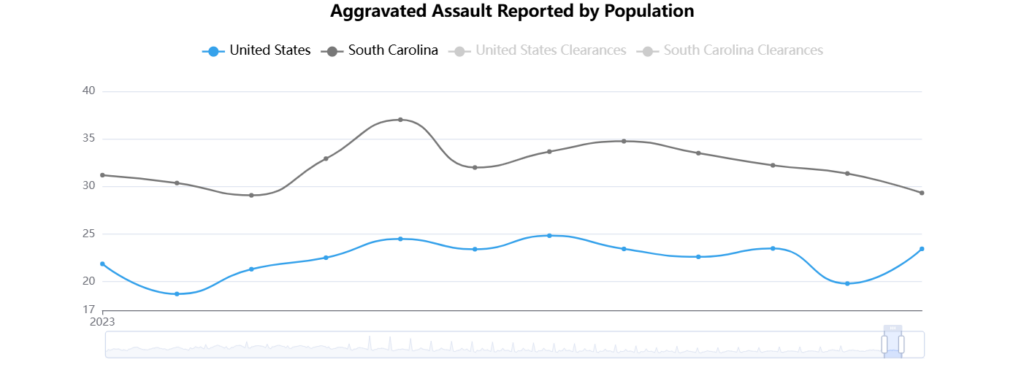
When it comes to property crime, South Carolina also reports higher-than-average rates. Take a look at the graphs below, with the exception of motor vehicle theft South Carolina has a higher rate of property crimes than the national average:
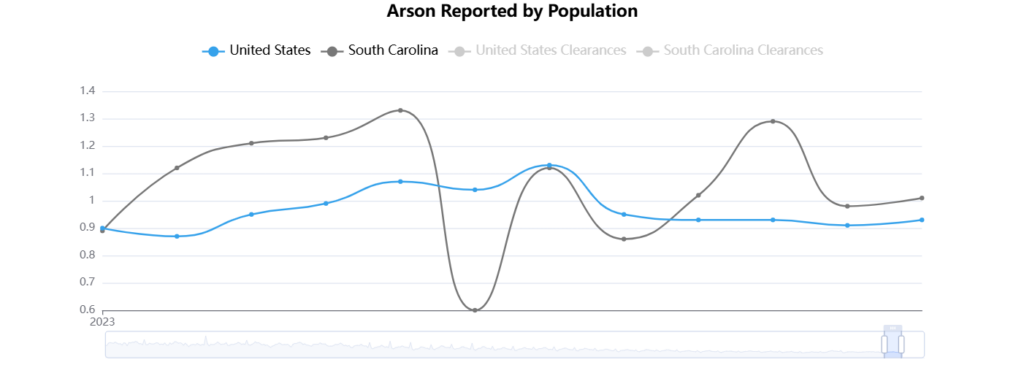
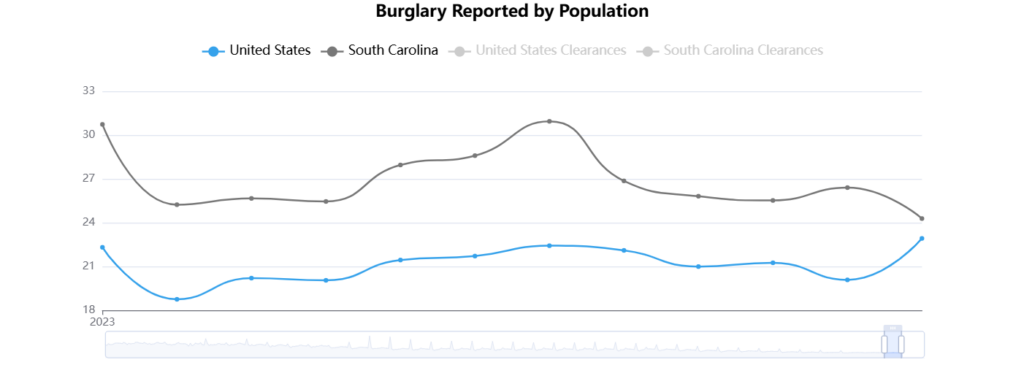
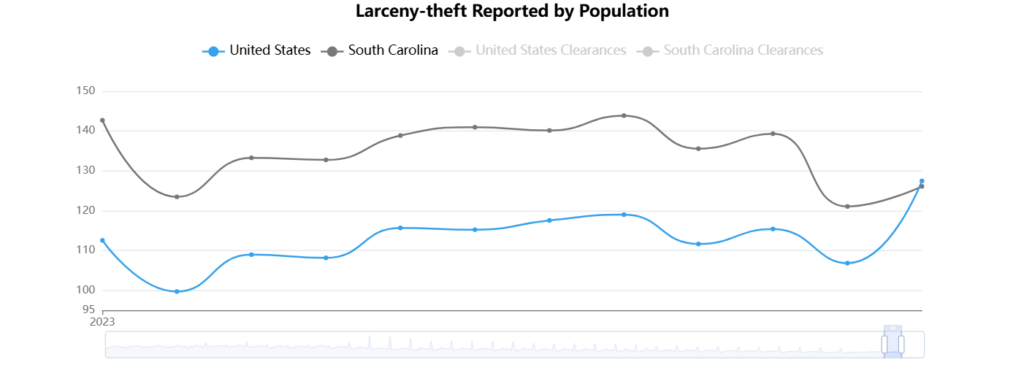
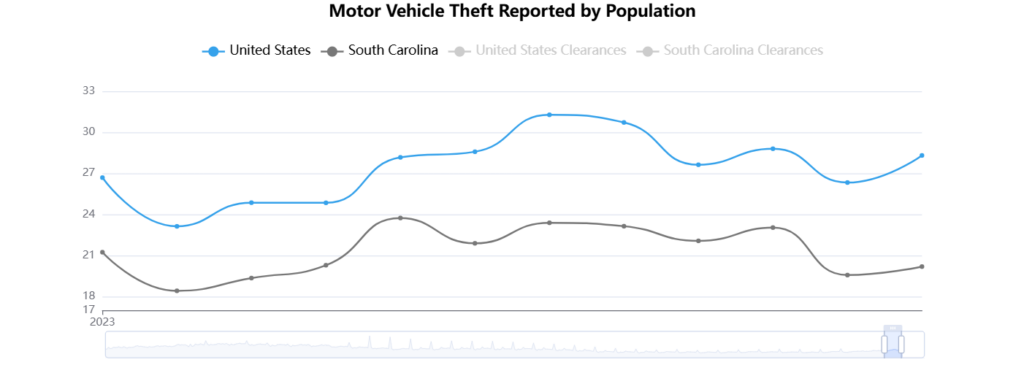
Cybercrime in South Carolina
As digital technology becomes more integral to daily life, cybercrime has emerged as a significant threat in South Carolina. From data breaches and phishing schemes to ransomware attacks, cybercriminals are targeting individuals, businesses, and even government institutions across the state. In recent years, the rise in cybercrime has led to increased efforts to track and combat these activities.
According to the FBI’s Internet Crime Complaint Center (IC3), South Carolina residents reported over 880,418 complaints nationwide in 2023, with potential losses exceeding $12.5 billion. The most common types of cybercrime reported include phishing scams, identity theft, and online shopping fraud. These crimes primarily target individuals, but small businesses are also heavily impacted, particularly by ransomware and business email compromise (BEC) attacks.
South Carolina is not immune to high-profile cyberattacks. For example, state agencies and private sector organizations have both been targeted, with data breaches exposing sensitive information such as Social Security numbers, medical records, and financial details. These breaches highlight vulnerabilities in cybersecurity infrastructure, emphasizing the need for enhanced preventive measures.
To address these challenges, South Carolina has taken proactive steps, including launching the South Carolina Cybersecurity Task Force and partnering with federal agencies like the Department of Homeland Security. These initiatives focus on improving cybersecurity awareness, training, and infrastructure across the state.
Conclusion
South Carolina’s crime trends highlight the complexities of public safety in the modern era. While the state has made significant strides in reducing violent crime rates, particularly in murder and aggravated assault, property crimes remain an area of concern. Additionally, the growing prevalence of cybercrime underscores the need for heightened digital security measures.
Moving forward, South Carolina must continue to invest in community policing, crime prevention initiatives, and digital literacy programs. Empowering communities to take an active role in safety, both offline and online, will be essential to building a safer environment for all residents. By addressing these challenges head-on, South Carolina can work toward becoming a safer, more secure state for its citizens.
Bio Recovery South Carolina provides professional biohazard cleanup, crime scene cleanup, death cleanup and suicide cleanup throughout the state of South Carolina.